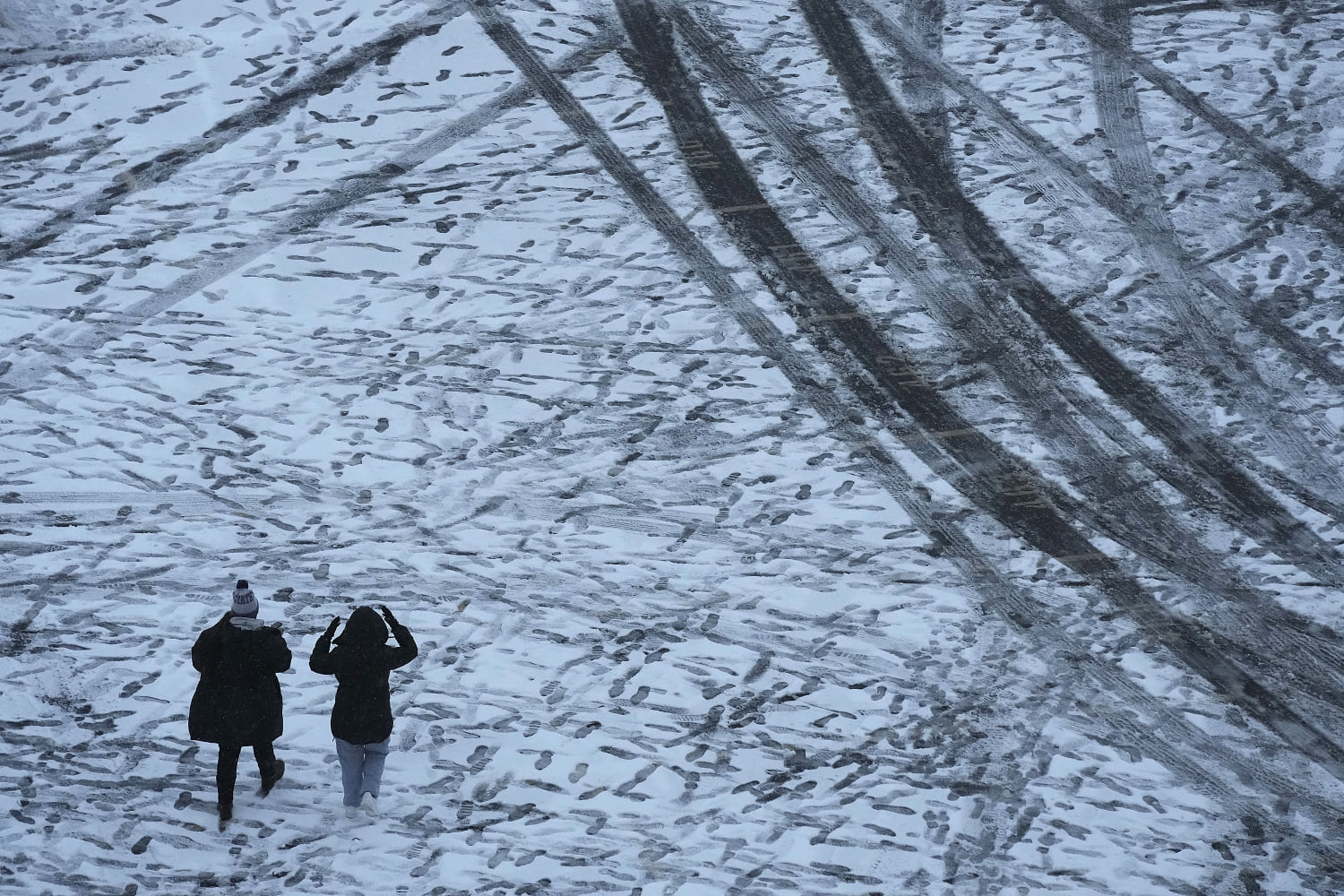[ad_1]

A Plains-to-Great Lakes storm is putting 14 million Americans under winter weather alerts while contributing to a sensation neglected amid reports of alarming climate change: cold.
Below-normal temperatures were expected from New Mexico to Kansas and from Oklahoma to the Upper Midwest, as the seasonal west-to-east upper-level low-pressure system brings rain and, in some places, half a foot of snow, federal forecasters said.
Temperatures could dip from 5 to 30 degrees below normal, according to NBC News forecasters.
The winter front is coming to big cities in the Midwest and East Coast as post-pandemic air travel booms and a single-day U.S. record of 2.9 million people were expected to fly home on Sunday following Thanksgiving.
Scott Keyes, founder of going.com, a platform for alerting travelers to discounted flights, said Sunday’s weather would present “perhaps the biggest test in air travel history” for U.S. carriers.
The cold, snowy front could present an alternative reality for those who experienced heat just last month, the fifth straight month during which the planet’s temperatures hit a record high mark in degrees measured above a pre-industrial average.
The effects of the holiday weekend weather include traditional November elements like lake effect snow in the Great Lakes region and rain along the Mid-Atlantic coast, federal forecasters said.
On Saturday, the winter storm gave parts of the West a taste of winter, with a freeze warning in effect for the Las Vegas Valley, and snow spotted on a Santa Fe, New Mexico, freeway.
It was expected to bring 4 inches of snow to Wichita, Kansas, and “minor accumulations” of the white stuff to Kansas City, Missouri, into Saturday evening, the National Weather Service said.
Other parts of the state could receive as much as 8 inches of snow and experience bitter winds as potent as 40 mph, it said.
Cold air from the north was expected to fill in the atmosphere behind the system and force temperatures down even more while helping to produce snow in parts of Michigan, Ohio, Pennsylvania, and New York state, the weather service said.
The system was forecast to be over the Northeast by Tuesday, the NWS said.
But its behavior along the East Coast, from the northern reaches of Florida into New England, could shed some of the cold associated with it when it was over the Great Lakes.
“Temperatures are expected to be warm enough to keep the precipitation as rain,” the NWS said in a nationwide forecast discussion.
 FARRATA NEWS Online News Portal
FARRATA NEWS Online News Portal






